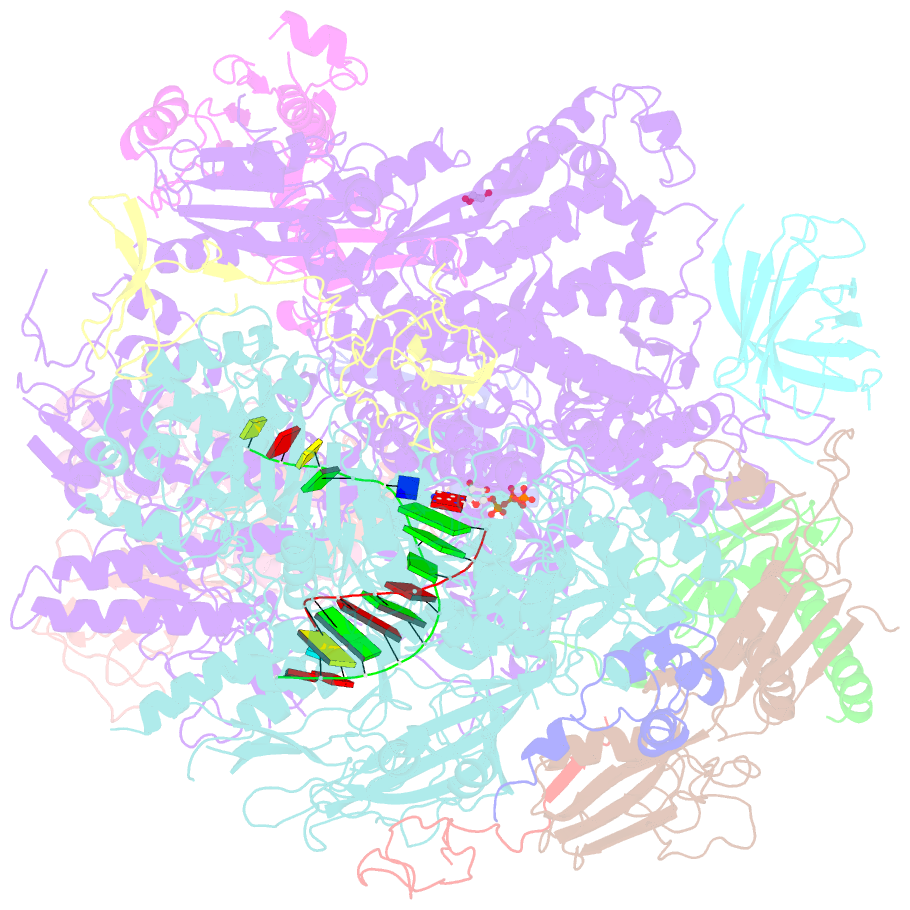Summary information and primary citation
- PDB-id
- 8u9r; SNAP-derived features in text and JSON formats;
DNAproDB
- Class
- transcription
- Method
- X-ray (3.34 Å)
- Summary
- Structural basis of transcription: RNA polymerase ii substrate binding and metal coordination using a free-electron laser
- Reference
- Lin G, Barnes CO, Weiss S, Dutagaci B, Qiu C, Feig M, Song J, Lyubimov A, Cohen AE, Kaplan CD, Calero G (2024): "Structural basis of transcription: RNA polymerase II substrate binding and metal coordination using a free-electron laser." Proc.Natl.Acad.Sci.USA, 121, e2318527121. doi: 10.1073/pnas.2318527121.
- Abstract
- Catalysis and translocation of multisubunit DNA-directed RNA polymerases underlie all cellular mRNA synthesis. RNA polymerase II (Pol II) synthesizes eukaryotic pre-mRNAs from a DNA template strand buried in its active site. Structural details of catalysis at near-atomic resolution and precise arrangement of key active site components have been elusive. Here, we present the free-electron laser (FEL) structures of a matched ATP-bound Pol II and the hyperactive Rpb1 T834P bridge helix (BH) mutant at the highest resolution to date. The radiation-damage-free FEL structures reveal the full active site interaction network, including the trigger loop (TL) in the closed conformation, bonafide occupancy of both site A and B Mg2+, and, more importantly, a putative third (site C) Mg2+ analogous to that described for some DNA polymerases but not observed previously for cellular RNA polymerases. Molecular dynamics (MD) simulations of the structures indicate that the third Mg2+ is coordinated and stabilized at its observed position. TL residues provide half of the substrate binding pocket while multiple TL/BH interactions induce conformational changes that could allow translocation upon substrate hydrolysis. Consistent with TL/BH communication, a FEL structure and MD simulations of the T834P mutant reveal rearrangement of some active site interactions supporting potential plasticity in active site function and long-distance effects on both the width of the central channel and TL conformation, likely underlying its increased elongation rate at the expense of fidelity.





